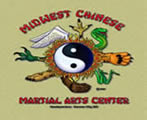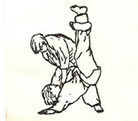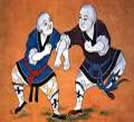| Specialty
Programs |
| Shaolin/Chi Lu Chuan Chin Na |
Chin Na, when translated, means capture and hold.
This style uses knowledge of bone structure, nerves, muscle formation,
vital areas and pressure points; especially relating to the nervous
system. Chin Na uses movements of twisting locks and joint
manipulations, it also employs many holding and escaping techniques.
Chin Na is practical for self defense and is excellent for the circles
it employs instead of using strength. It is ideal for anyone who is
small in body but big in mind and spirit. * more on Chin Na
|
| Trapping
And Intercepting |
R.A.T.T.
Combat Self-Defense System |
| This method concentrates on simple, direct and explosive
strikes and counters by combining the best techniques from Praying
Mantis, Tiger, Dragon, and Snake. These techniques and drills teach a
student to control an opponent by jamming, pressing, holding, and
trapping. In addition, drills are taught for sensitivity and to
increase awareness. The student will work on the wooden man dummy (muk
jong) for hand and arm conditioning. Weapon training (single and double
Escrima sticks, and Stick/Knife fighting) is offered in this class. Adults Wednesday night-Trapping for Teens 13-19 Monday 5-6 pm. * More info |
This class concentrates on no-nonsense, aggressive
self-protection techniques. The word R.A.T.T. stands for Responsive
Awareness Tactical Training, and we teach you how to React, Attack,
Take-Down, or Throw, in an extensive 8 week session. No uniform or
sashes (belts signifing rank) will be required for this class, come as
you are. These specialized techniques have been taught to many Police,
Sheriff, and Security Officers. This program has also been taught to
corporations and businesses through seminars. The students will learn
basic stick drills, some rolling and falling, and many escaping
techniques. * more info on R.A.T.T. |
| Kiddie
Kung-Fu |
Lung Lum
Pai Dragon Style Kung Fu
|
| This unique program is geared for toddlers ages 4 & 5. In
this class, we focus on an introduction to Animal Kung-Fu. We learn
basic blocks, strikes and kicks that represent zoo animals: Tiger,
Crane, Leopard, Snake, Dragon (lizard), and Monkey. This practical
approach helps children to build self-esteem, develop gross motor
skills, improve coordination and strengthen memory retention. This
method highly stresses self-control and safety, which is always the
number one concern. In addition, we try to teach them to spend a few
minutes in quiet time to relax (meditation) to learn attention skills.
Same basic rolling and tumbling is also taught. |
The Lung Lum Pai Dragon Style Kung fu system
originated from the area of the South China Sea. Dragon is one of the
original 5 Shaolin animals. Inspired by the movements of the ferocious
Komodo Dragon, it uses twisting winding movements both fast, slow, close,
wide, long, and short. Dragon techniques generate tremendous
circular power from the hips, chi kung (energy breathing exercises-Chi
(life force), and the ground. These unusual but powerful movements
are agile, deceptive, quick, as well as confusing. When it attacks or
defends it blocks and strikes simultaneously. The Dragons venom is
so toxic that it infects anything it bites (acupressure points/Chinese
medicine) and favors a variety of joint locks/manipulations, chokes,
sealing breath, as well as pressure point striking. This system of the all
powerful predator also has a passive and wise nature and is widely known
as the Chinese guarding Dragon; It became a symbol of the Chinese Emperors
and thus all Chinese are known as the decedents of the Dragon. This style
has more than 10 empty hand forms, and has 10 weapon forms. Lung Lum Pai
Dragon style uses weapons that are long, short, double, or flexible. It
makes use of Chinese medicine and acupressure points, chi kung (energy
breathing) to both awaken, enhance, and strengthen the body as well as can
be used to disrupt the organs and or meridians of an attacker. It also
uses movements that are both hard and soft, standing up or on the
ground. * More on LLP Dragon Style |


 For More Information Please contact us at ..Midwest Chinese Martial Arts Center 816-444-4777
For More Information Please contact us at ..Midwest Chinese Martial Arts Center 816-444-4777